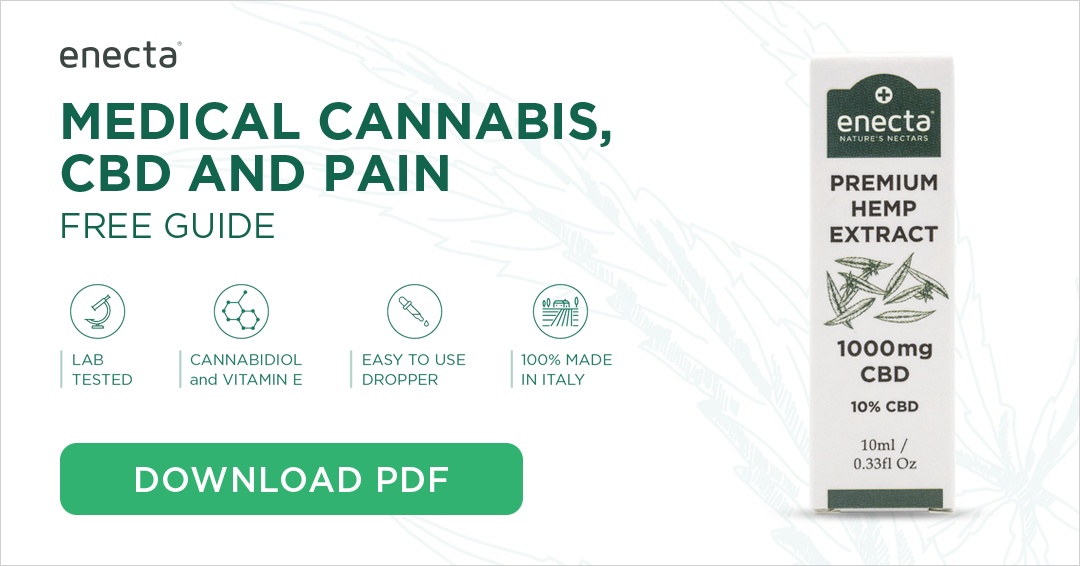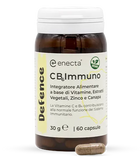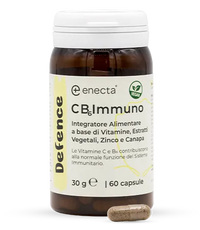Basics: How CBD Alleviates Menstrual Pain
For many women, the days surrounding menstruation are often associated with unpleasant pain and cramps. The quest for effective and natural relief increasingly leads to CBD (Cannabidiol), a compound known for its pain-relieving properties. CBD products offer a promising option for women suffering from menstrual pain through their varied mechanisms of action.
Modulation of the Endocannabinoid System
The endocannabinoid system (ECS) plays a central role in pain regulation. Cannabidiol interacts with the ECS by enhancing the activity of the body's own cannabinoids. This interaction can modulate the transmission of pain signals, thus significantly reducing pain perception.
Anti-Inflammatory Properties
The anti-inflammatory properties of CBD can directly contribute to the relief of menstrual pain. By reducing pro-inflammatory cytokines, inflammation in the lower abdomen is reduced, leading directly to relief from menstrual pain.
Influence on the Serotonergic System
Cannabidiol has a modulating effect on the serotonergic system, which can contribute to pain relief. Increasing the availability of serotonin in the brain, the so-called "feel-good neurotransmitter," can reduce pain perception while simultaneously improving mood.
Improving Sleep Quality
A good night's sleep is essential for pain tolerance. CBD helps to fall asleep faster and improve sleep quality. Restful sleep reduces sensitivity to pain and supports physical recovery.
Stress Reduction
The anxiolytic properties of CBD drops can contribute to the reduction of stress-related menstrual pain. By lowering stress levels, CBD can indirectly relieve menstruation-related pain.
Safety and Flexibility
CBD is generally well-tolerated and offers a safe alternative to traditional painkillers with fewer side effects. Moreover, various consumption forms allow for flexible adaptation to individual needs and preferences.

Reducing Period Pain with CBD Products
Menstrual pain can be caused by a variety of factors, one of which is the increase in prostaglandin levels. These hormone-like substances play a significant role in triggering menstrual pain. CBD offers a natural method to address this specific trigger, thereby alleviating discomfort associated with the period.
Modulation of the Endocannabinoid System
The endocannabinoid system (ECS) directly influences prostaglandin production. CBD supports the ECS, which can lead to a reduction in prostaglandin levels in the uterus. This reduction can provide significant relief from cramps and pain during the cycle.
Direct Effect on Pain Signals
CBD affects the sensitivity of pain receptors to prostaglandins. By reducing this sensitivity, CBD can effectively lessen the discomfort caused by prostaglandins, leading to noticeable relief.
Influence on Enzyme Activity
The production of prostaglandins is catalyzed by specific enzymes. CBD can modulate the activity of these enzymes, potentially reducing prostaglandin production in the body, thereby contributing to a reduction in menstrual pain.
Synergistic Effects
Combining CBD drops with other natural anti-inflammatory agents can achieve synergistic effects. This combination can enhance the effectiveness in reducing prostaglandin production, thus improving relief from menstrual pain.
Supporting the Immune System
The immune system plays a role in prostaglandin production. By modulating the immune system, CBD can help promote a healthy balance and control excessive prostaglandin production.

Easing Cramps with CBD
The period can be a time of intense physical discomfort for many women, including cramps and muscle tension. The muscle-relaxing effect of CBD drops offers a promising natural approach to alleviate these specific symptoms and enhance well-being during the cycle, easing menstrual pain.
Modulation of GABA Receptors
GABA, the primary inhibitory neurotransmitter in the central nervous system, is essential for regulating muscle tension. CBD can enhance the effect of GABA, thus reducing neural activity and relaxing muscles. This increase in GABA activity helps to effectively reduce muscle cramps and tension.
Inhibition of Pain Signals
CBD acts as a natural analgesic by modulating the transmission of pain signals to the brain. This analgesic effect not only reduces pain perception but also promotes muscle relaxation, further easing menstrual discomfort.
Anti-Inflammatory Properties
Inflammation in the body can intensify muscle tension and pain. Through its anti-inflammatory effect, CBD helps to minimize inflammatory responses, indirectly leading to muscle relaxation and thus alleviating menstruation-related pain.
Direct Effect on Musculature
CBD can directly affect muscle cells and contribute to relaxation, by influencing the calcium channels in the cells. This direct effect can help reduce muscle contractions and thus ease cramps.
Improving Circulation
Relaxed muscles promote improved blood circulation. CBD contributes to muscle relaxation and thereby enhances blood supply to affected areas. Efficient delivery of oxygen and nutrients supports muscle health and contributes to pain reduction.

Improving Mood During the Cycle with CBD
Menstruation can be a challenging time for many women, not just physically but also emotionally. The mood-enhancing and anxiolytic properties of CBD drops offer a healthy way to manage the emotional and psychological challenges that can occur during this time. Incorporating CBD as part of a holistic approach to emotional health during menstruation provides women with a natural, low-side-effect option.
Interaction with the Serotonin System
CBD positively affects the serotonin system, often referred to as the "happiness hormone." By binding to and modulating 5-HT1A receptors, CBD can help lift mood and reduce anxiety levels. This interaction offers a direct approach to enhancing emotional well-being.
Supporting the Endocannabinoid System
The endocannabinoid system (ECS) plays a central role in maintaining emotional balance. CBD supports the ECS, promoting homeostasis in the body and thus stabilizing mood. This support is particularly valuable during menstruation-related emotional fluctuations.
Neuroprotective Properties
The neuroprotective effects of CBD protect the brain from the negative impacts of stress and anxiety. This protective effect supports long-term emotional stability and resilience.
Modulation of Dopamine Receptors
CBD can also influence dopamine receptors, directly affecting feelings of satisfaction and reward, thereby positively influencing mood.
Promoting Overall Well-being
Combining these effects, CBD can improve overall well-being, which in turn positively affects mood and facilitates coping with emotional challenges during menstruation.
Supporting Digestion During Menstruation with CBD
An essential aspect of female health during menstruation is the digestive system, which can often be affected by bloating, cramps, and irregularities. The positive impact of CBD on the digestive system offers women a natural option for alleviating these discomforts. Through its interaction with the body on various levels, CBD can help improve digestion and promote general well-being during the menstrual cycle.
Anti-Inflammatory Effects
The anti-inflammatory properties of CBD help alleviate inflammatory processes in the digestive tract. This can significantly reduce pain and discomfort often experienced during the cycle, improving digestive function.
Promoting a Healthy Gut Microbiome
A healthy balance of gut flora is crucial for efficient digestion. CBD can have positive effects on gut health by supporting microbial balance, thus helping to prevent and alleviate digestive issues like bloating.
Anti-Nausea Effects
CBD has proven effective against nausea and vomiting, making it a valuable aid for digestive problems that can accompany menstruation. This property can help reduce feelings of nausea and improve quality of life.
Regulation of Stomach Acid
By potentially influencing stomach acid production, CBD can be helpful in preventing and treating digestive problems like heartburn or acid reflux that can occur during menstruation.
Appetite Stimulation
CBD can also regulate and stimulate appetite, which can be particularly useful during menstruation when appetite can be affected by various factors.

Naturally Regulating Hormonal Balance
A key aspect contributing to CBD's effectiveness in alleviating menstrual discomfort is its potential ability to regulate hormonal balance. Hormonal fluctuations play a crucial role in a variety of menstrual discomforts, including cramps, mood swings, and general malaise. Although research into CBD and its impact on hormonal balance is still in its infancy, existing findings offer promising indications of its therapeutic potential.
The Role of the Endocannabinoid System
The endocannabinoid system (ECS) acts as a central regulator in the body and is directly involved in controlling hormonal balance. CBD supports the ECS in its function, which in turn can help correct hormonal imbalances. By strengthening the ECS, CBD can contribute to the restoration of hormonal balance, playing a significant role in alleviating menstrual discomfort.
Influence on the Adrenal Glands
The adrenal glands produce cortisol, known as the stress hormone. A balanced cortisol production is essential for hormonal balance and overall well-being. CBD has the potential to influence the function of the adrenal glands and regulate cortisol production, leading to reduced stress and improved hormone balance.
Modulation of Hypothalamus Activity
The hypothalamus plays a key role in regulating hormone production in the body. CBD can influence the activity of the hypothalamus, leading to improved regulation of hormones important for the menstrual cycle.
Reduction of Stress and Improvement of Sleep
Stress and lack of sleep can significantly impact hormonal balance. The anxiolytic properties of CBD and its ability to improve sleep quality can indirectly contribute to stabilizing hormonal balance. A healthy sleep cycle and reduced stress are fundamental for balanced hormone production.
Final Thoughts
CBD offers a natural, low-side-effect option for women suffering from menstrual discomfort and seeking an alternative or complementary treatment to conventional methods. The potential ability of CBD to regulate hormonal balance is just one aspect of its diverse therapeutic effects. However, women considering CBD for relief from menstrual discomfort should always consult a doctor to ensure safe and personalized use.

























